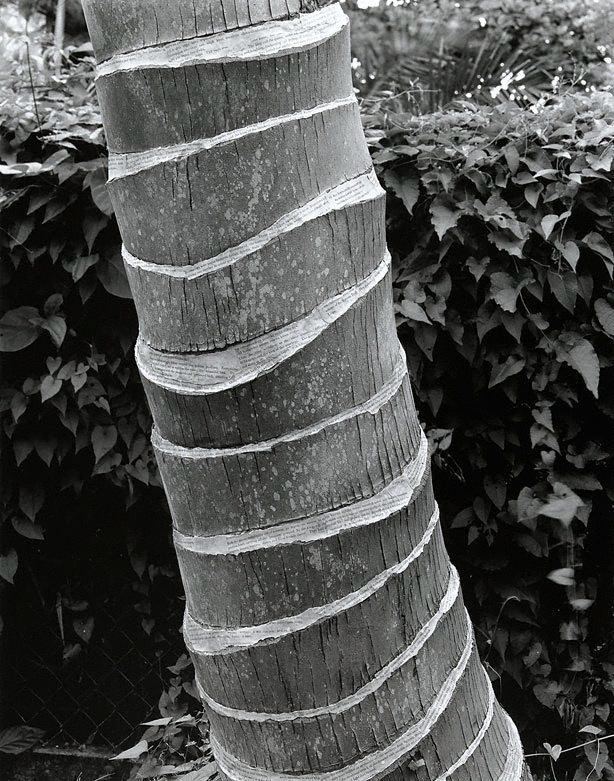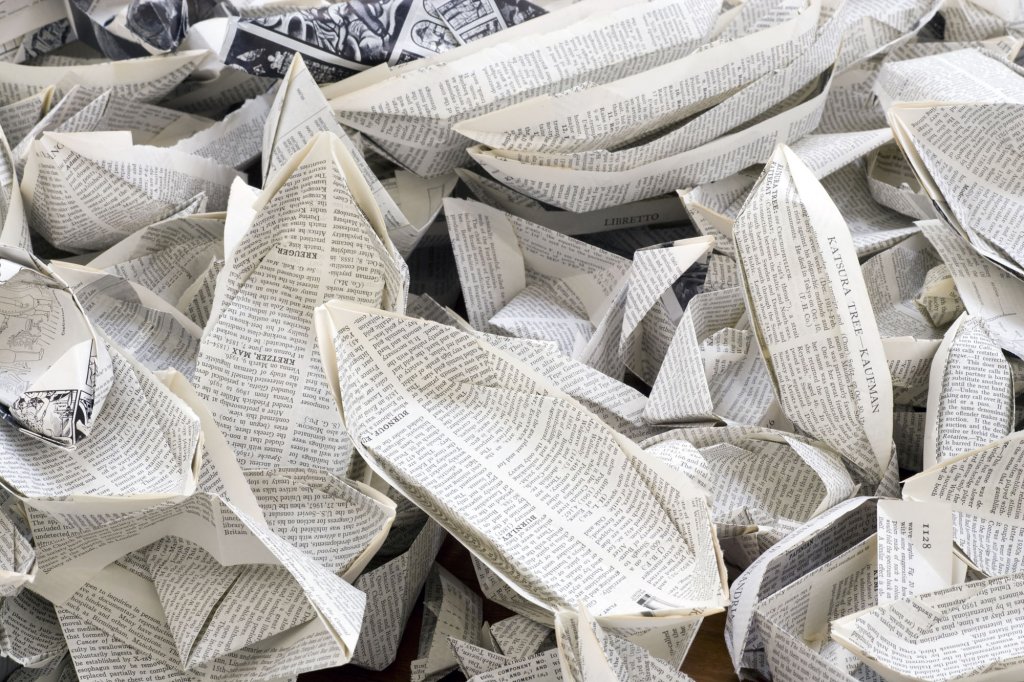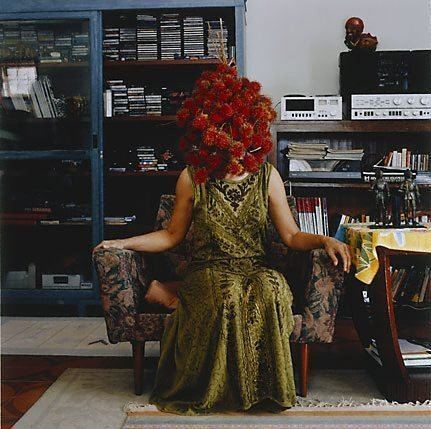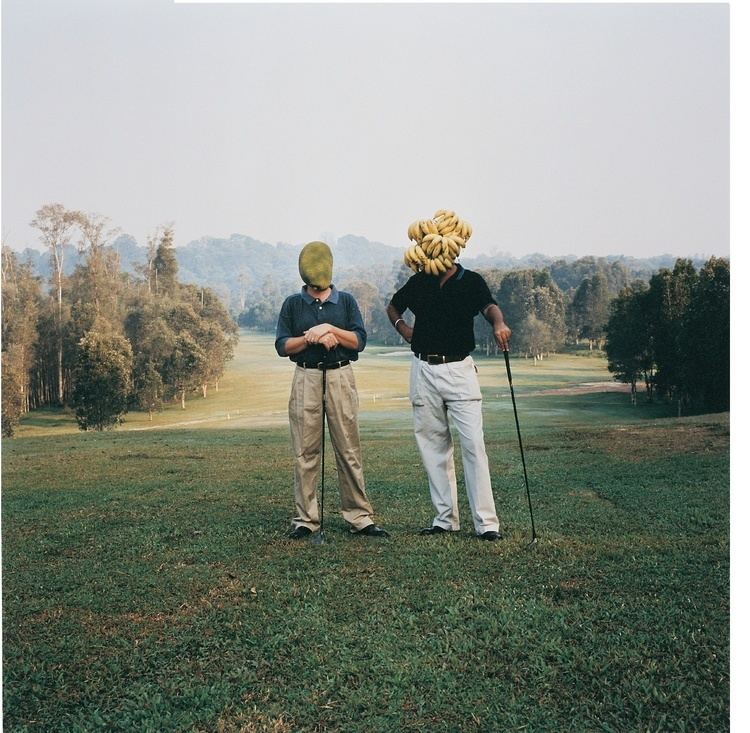Artwork Dalam, No.39, Dalam, No. 227, Dalam, No. 226, Dalam, No.4, Dalam, No.162 People also search for Catherine de Zegher, Daniel Palmer, Naomi Cass | ||
Simryn Gill is an artist who works in sculpture, photography, drawing and writing. She is known for her collecting, and has produced many works synthesizing ephemera that she has collected. Gill was born in Singapore in 1959, and has since lived in Malaysia, India and the United Kingdom. She divides her time between Sydney, Australia and Port Dickson, Malaysia. Her diverse background has informed and influenced her work, drawing on imagery and resources from her various homes
Contents
- Style and works
- Venice Biennale
- Collections and exhibitions
- Solo exhibitions
- Group Exhibitions
- References

Style and works

Gill's work is said to embody a sense of "in-between-ness", with pieces inspired by her various homes and the influence of place. She acknowledged the irony this brought to her 2013 feature in the Australian pavilion at the Venice Biennale, saying "mine is not a representative voice—in fact, it's entirely the opposite of that possibility … Representation is a very strange notion." Her work has been said to occupy a space of transition and compromise, taking small mementos and fleeting moments of everyday life to construct a sense of belonging. Red Hot (1992), a Native American headdress made from dried chilies, was made from Gill's homegrown chilies while she was completing projects from a 1950s boy scout manual with her son. This gentle incursion of the everyday into Gill's art is acknowledged in the foreword to the publication accompanying Gill's exhibition at the Museum of Contemporary Art, Sydney, in 2008-09. Director Elizabeth Ann Macgregor characterizes her as "an artist whose approach is rigorous yet sensual, conceptual yet tactile."

Gill is a systematic collector, "especially of books as objects of reverence and dispute". Roadkill (1999–2000) features hundreds of items collected from the side of the road, including flattened plastic and discarded rubbish. In many of these works, audiences are invited to play with and reposition the items, leaving interpretation of meaning to the viewer.

Her photographic works often come in series. My Own Private Angkor, 2007–2009, spans 90 photographs taken in an abandoned and decaying housing development in Malaysia. The estate, one the fringe of Port Dickson, had been ransacked for anything of value and left to the tropical elements. The name of the series alludes to "the ruins of a civilization that had been suddenly curtailed", that of the ancient city of Angkor in Cambodia. Similarly, the series Standing Still (2000) examines deserted and ruined architecture across the Malaysian peninsula following the country's economic decline.

Books and words are recurring themes and mediums in Gill's work. Pearls (2008) is a sparse publication full of images of strings of beads. On closer inspection, the reader discovers each bead is made from tightly wound strips of paper, cut from canonical texts like Mao's 'Four Essays On Philosophy' and more mundane books, such as a tome on highland dress. The exhibition variation of Pearls, 9 Volumes of the Collected Works of Mahatma Gandhi (2008–09), again invited visitors to touch and play with the volumes, now turned into boules-style balls. This preoccupation with words and the dismantling of the constraints they place on us is revisited in Where to Draw the Line (2011–2012), now housed in the collection of the Museum of Modern Art. ArtAsiaPacific sees in these works as a continual process of negotiation with words, a desire to reduce their impact and to make them physical and tactile: "of course the real keepers and foot soldiers in this world of words are books, and Gill has employed an arsenal of them for her quietly revolutionary purposes".
Venice Biennale

Gill represented Australia in the 2013 Venice Biennale, with the exhibition entitled Here Art Grows on Trees. Working with curator Catherine de Zegher, Gill produced four unique works for the festival. De Zegher described the inspiration for the exhibition as "a space of negotiation between the small and the global, between nature and industry, as it reveals an understanding of the interconnectedness of all in a world in flux". Challenging her audience to see her work as impermanent and transitory, Gill removed sections of the roof of the Australian pavilion, "allowing each moment of the six month exhibition to be a unique snapshot". as exposure of the work changed it over time.
The exhibition expanded on a number of previous works and extensive on-site research. Eyes and Storms was the result of field trips to Australia's mining centre, the mines of which Gill photographed from the air. Let Go, Lets Go reprised the theme of deconstructing books, with a fleet of insects made from tiny scraps of paper making their way across the work. Building on found object works such as Garland (1993–2008; 2012), Naught gathers objects in the shape of zeros. Half Moon Shine, a great gilded bowl created to specific requirements in India, collected water and leaves blowing in from the open roof.
Collections and exhibitions
Gill's work has been acquired into the permanent collections of many major institutions, including:
Solo exhibitions
Gill is represented by Tracy Williams Ltd in New York City, and has held four solo exhibitions in the gallery: Blue (2014), Simryn Gill | Nicole Cherubini (2012), Holding Patterns (2010) and Interiors (2009).
